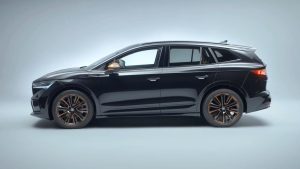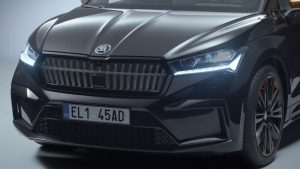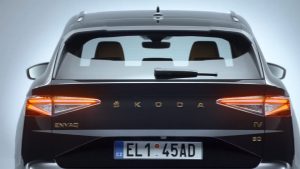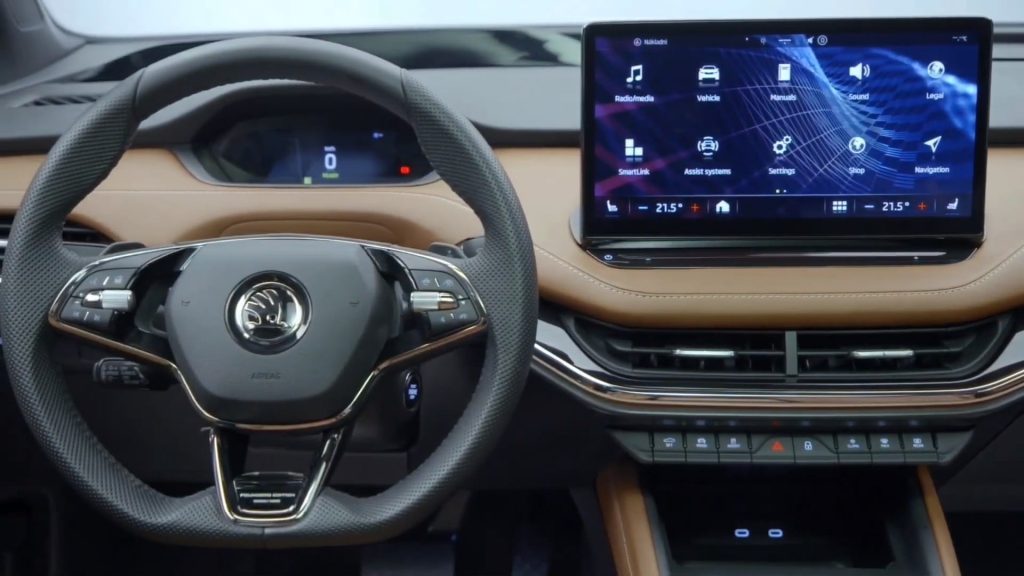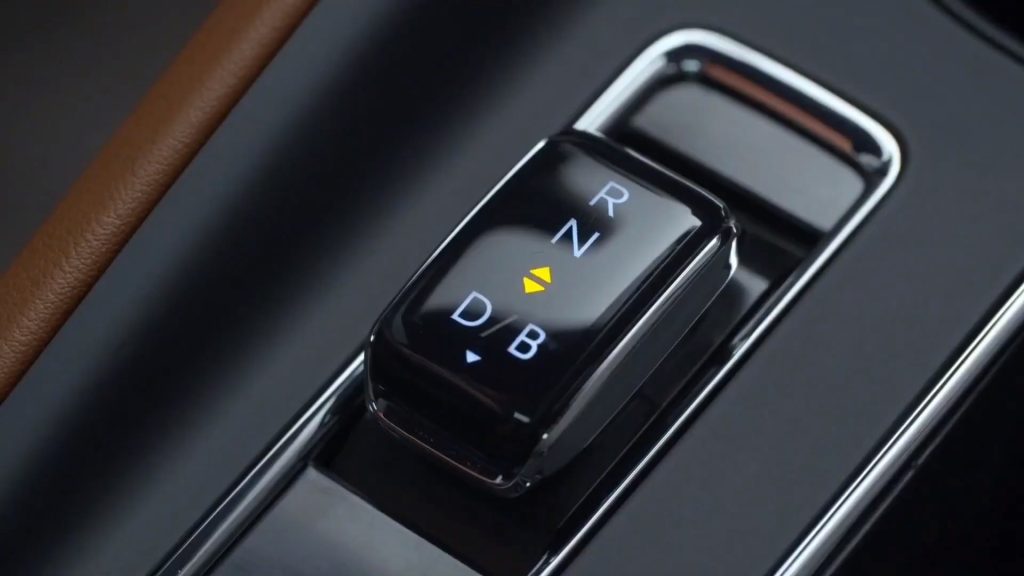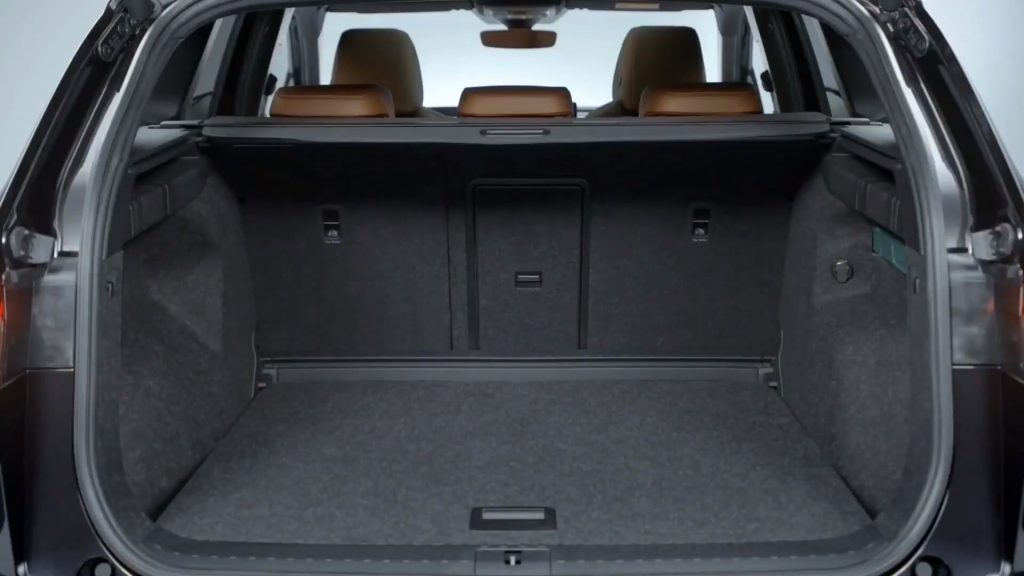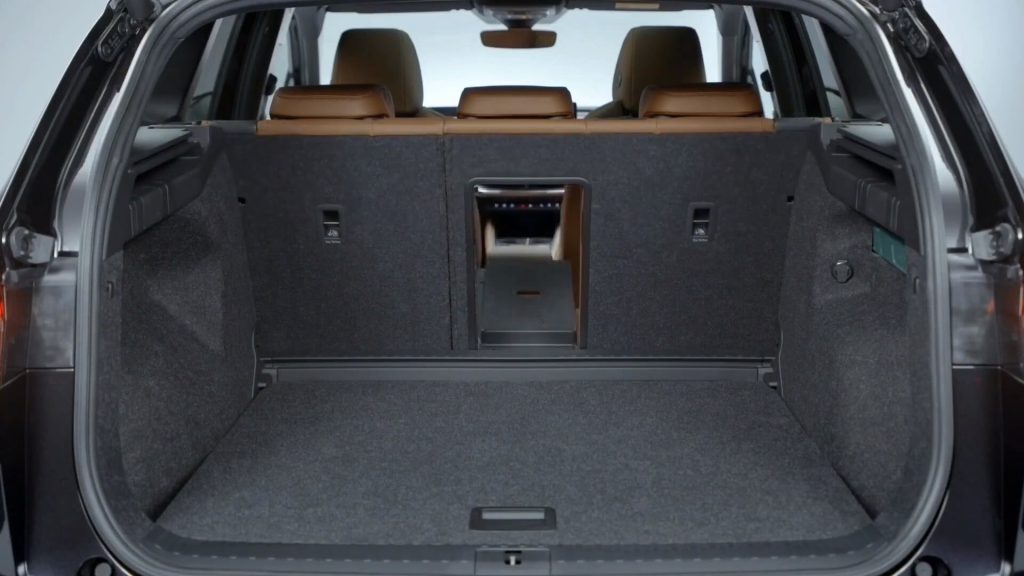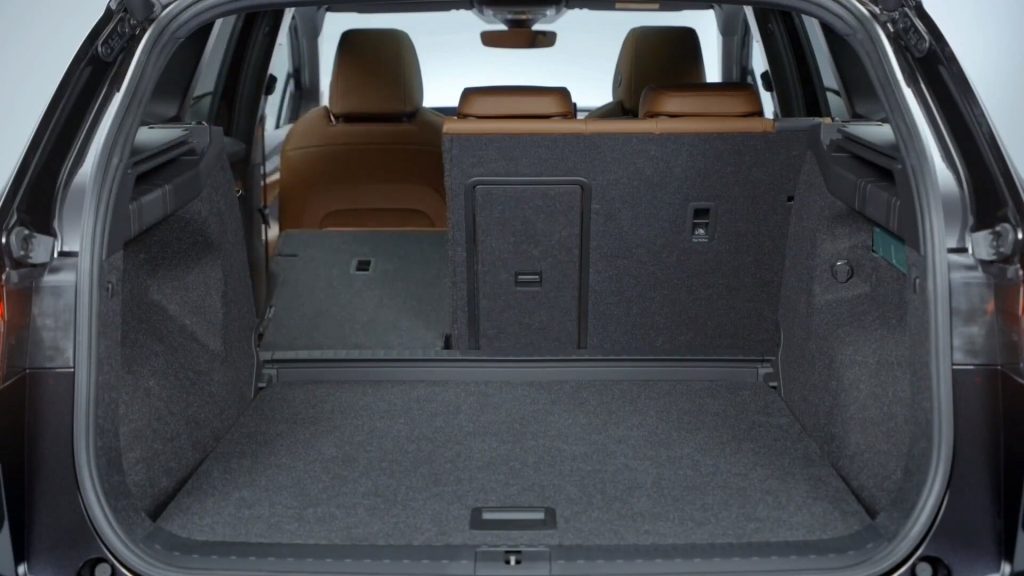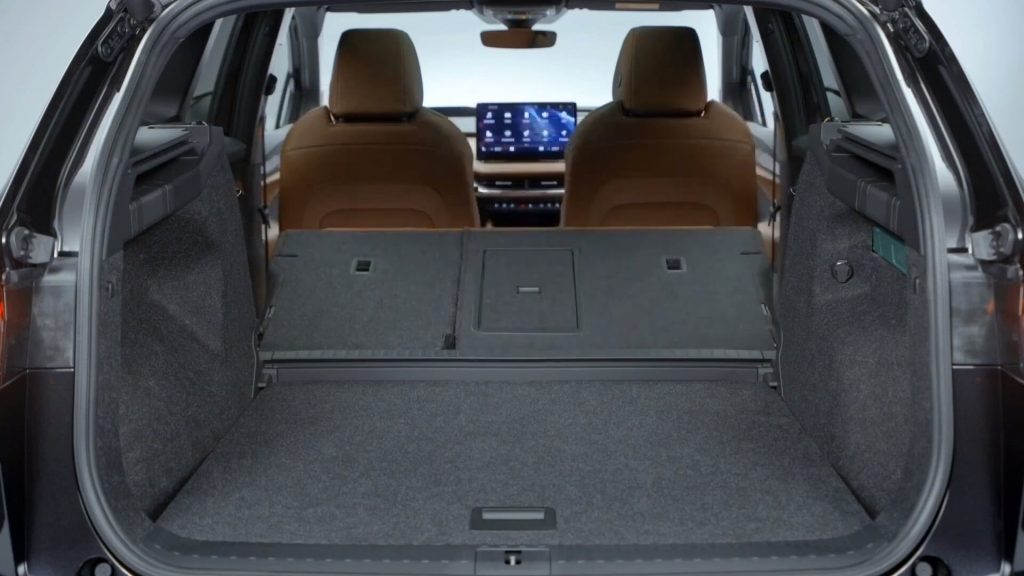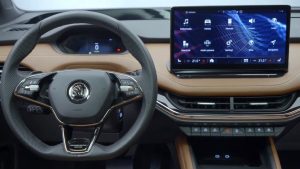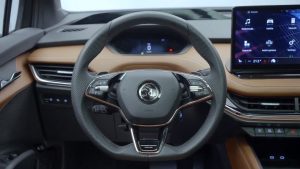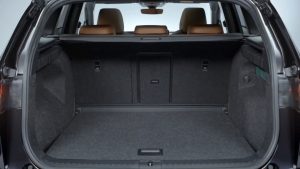Skoda Enyaq iV 80
The Skoda Enyaq iV 80 is an all-electric SUV produced by the Czech automaker Skoda. It is the brand’s first electric vehicle based on the Volkswagen Group’s MEB platform, which is designed specifically for electric vehicles.
The Enyaq iV 80 is powered by an electric motor that produces 310 Nm of torque, and it has an 82 kWh battery pack that provides a range of up to 420 km on a single charge. The Enyaq iV 80 can accelerate from 0 to 100 km/h (60 mph) in just 8.6 seconds and has a top speed of 99 mph.
The Enyaq iV 80 also features a spacious and modern interior with a 13-inch infotainment display, a digital instrument cluster, and a variety of advanced safety features, including forward-collision warning, lane-departure warning, and adaptive cruise control.
Overall, the Skoda Enyaq iV 80 is a practical and versatile electric SUV that offers a good balance of range, performance, and features at a competitive price point. It is a strong competitor in the rapidly growing electric SUV market and is expected to be well-received by drivers who value efficiency, comfort, and style.
| Performance | |
| Acceleration 0 – 100 km/h | 8.6 sec |
| Top Speed | 160 km/h |
| Electric Range | 420 km |
| Total Power | 150 kW (204 PS) |
| Total Torque | 310 Nm |
| Drive | Rear |
| Battery and Charging | |
| Battery Capacity | 82.0 kWh |
| Battery Useable | 77.0 kWh |
| Europe | |
| Charge Port | Type 2 |
| Port Location | Right Side – Rear |
| Charge Power | 11 kW AC |
| Charge Time (0->420 km) | 8h15m |
| Charge Speed | 51 km/h |
| Fastcharge Port | CCS |
| FC Port Location | Right Side – Rear |
| Fastcharge Power (max) | 135 kW DC |
| Fastcharge Time (42->336 km) | 33 min |
| Fastcharge Speed | 530 km/h |
| Click here for all charging information | |
| Energy Consumption | |
| EVDB Real Range | |
| Range | 420 km |
| Vehicle Consumption | 183 Wh/km |
| CO2 Emissions | 0 g/km |
| Vehicle Fuel Equivalent | 2.1 l/100km |
| WLTP Ratings (TEL) | |
| Range | 534 km |
| Rated Consumption | 167 Wh/km |
| Vehicle Consumption | 144 Wh/km |
| CO2 Emissions | 0 g/km |
| Rated Fuel Equivalent | 1.9 l/100km |
| Vehicle Fuel Equivalent | 1.6 l/100km |
| WLTP Ratings (TEH) | |
| Range | 510 km |
| Rated Consumption | No Data |
| Vehicle Consumption | 151 Wh/km |
| CO2 Emissions | 0 g/km |
| Rated Fuel Equivalent | No Data |
| Vehicle Fuel Equivalent | 1.7 l/100km |
| TEL = Test Energy Low | TEH = Test Energy High | |
|
Rated = official figures as published by manufacturer. Rated consumption and fuel equivalency figures include charging losses.
|
|
|
Vehicle = calculated battery energy consumption used by the vehicle for propulsion and on-board systems.
|
|
| Real Energy Consumption Estimation | |
| between 125 – 257 Wh/km | |
| City – Cold Weather * | 186 Wh/km |
| Highway – Cold Weather * | 257 Wh/km |
| Combined – Cold Weather * | 217 Wh/km |
| City – Mild Weather * | 125 Wh/km |
| Highway – Mild Weather * | 200 Wh/km |
| Combined – Mild Weather * | 159 Wh/km |
|
Indication of real-world energy use in several situations. Cold weather: ‘worst-case’ based on -10°C and use of heating. Mild weather: ‘best-case’ based on 23°C and no use of A/C. The energy use will depend on speed, style of driving, climate and route conditions.
|
|
| Safety (Euro NCAP) | |
| Safety Rating | |
| Adult Occupant | 94% |
| Child Occupant | 89% |
| Rating Year | 2021 |
| Vulnerable Road Users | 71% |
| Safety Assist | 82% |
|
For more details on the safety rating of this vehicle, visit euroncap.com
|
|
| Dimensions and Weight | |
| Length | 4649 mm |
| Width | 1879 mm |
| Width with mirrors | 2148 mm |
| Height | 1616 mm |
| Wheelbase | 2765 mm |
| Weight Unladen (EU) | 2090 kg |
| Gross Vehicle Weight (GVWR) | 2616 kg |
| Max. Payload | 601 kg |
| Cargo Volume | 585 L |
| Cargo Volume Max | 1710 L |
| Cargo Volume Frunk | 0 L |
| Roof Load | 75 kg |
| Tow Hitch Possible | Yes |
| Towing Weight Unbraked | 750 kg |
| Towing Weight Braked | 1000 kg |
| Vertical Load Max | 75 kg |
| Miscellaneous | |
| Seats | 5 people |
| Isofix | Yes, 3 seats |
| Turning Circle | 9.3 m |
| Platform | VW MEB |
| Car Body | SUV |
| Segment | JC – Medium |
| Roof Rails | Yes |
| EV Dedicated Platform | Yes |
Home And Destination Charging (0 -> 100%)
A public charging station is required to use the highest possible charging rate. The EVSE/charging station’s charging capacity affects how long it takes to fully charge the battery. The table below shows all possible options for fully charging the Peugeot e-208
In Europe, plugging an electric car into an outlet is often as easy as plugging it into a household outlet, but there are differences from country to country. The table below shows the different ways to charge the Peugeot e-208 , but in some countries some chargers may not be available.
Type 2 (Mennekes – IEC 62196)

| Charging Point | Max. Power | Power | Time | Rate |
| Wall Plug (2.3 kW) | 230V / 1x10A | 2.3 kW | 39h30m | 11 km/h |
| 1-phase 16A (3.7 kW) | 230V / 1x16A | 3.7 kW | 24h30m | 17 km/h |
| 1-phase 32A (7.4 kW) | 230V / 1x32A | 7.4 kW | 12h15m | 34 km/h |
| 3-phase 16A (11 kW) | 400V / 3x16A | 11 kW | 8h15m | 51 km/h |
| 3-phase 32A (22 kW) | 400V / 3x16A | 11 kW | 8h15m | 51 km/h |
Fast Charging (10 -> 80%)
If you want to enjoy driving an electric car, one of the most important features to consider is the number of miles per hour the car can travel while charged. This is called the “range” of the car. All electric cars have a certain range, even if they are 100% charged. This is because they do not have an internal combustion engine to lean on if you need to drive a long distance.
Max. Power: The maximum power provided by the charging point
Avg. Power: The average power provided by the charging point during a session of 10% to 80%.
Time: the time it takes to charge from 10% to 80%
Speed: the average charging rate during the session of 10% to 80%
Combined Charging System (CCS Combo 2)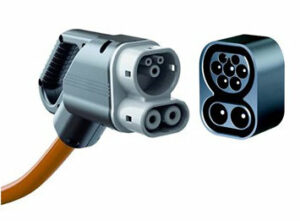
| Charging Point | Max. Power | Avg. Power | Time | Rate |
| CCS (50 kW DC) | 49 kW | 48 kW | 71 min | 240 km/h |
| CCS (175 kW DC) | 135 kW | 103 kW | 33 min | 530 km/h |
| CCS (350 kW DC) | 135 kW | 103 kW | 33 min | 530 km/h |
| Brand | Skoda |
| Model | Enyaq iV 80 |
| Body Style | SUV |
| Car Engine | electric |
| Motor power | 150 |
| Maximum Torque, Nm | 310 |
| Battery Energy, kWh | 82.0 |
| Power reserve (NEDC/EPA/WLTP), km | - / - / 420 |
| Level Charging (230/400/DC), hours | 12.15 / 8.15 / 0.33 |
| Electrical Acceleration, 0-100 km/h (0-62.1 mph) in sec | 8.6 |
| Top Speed, km/h | 160 |







